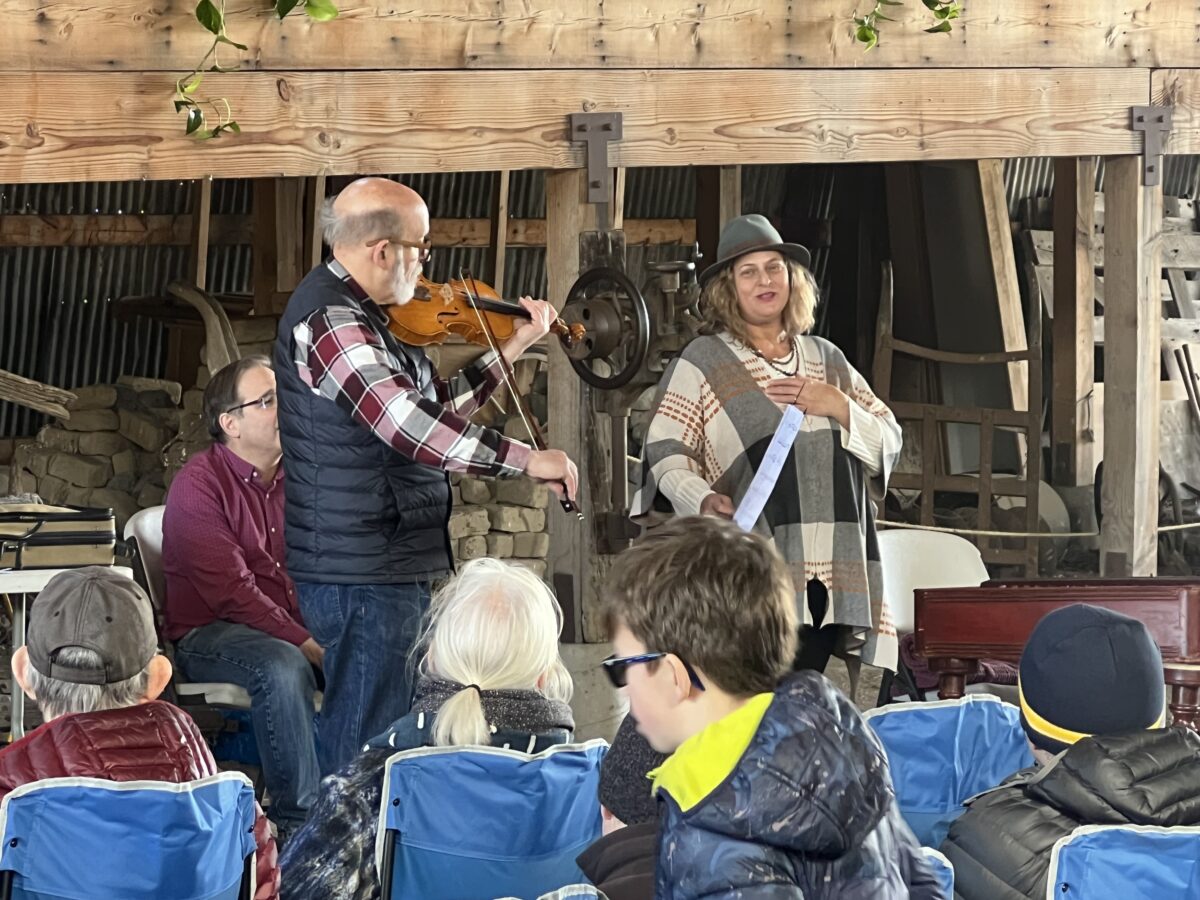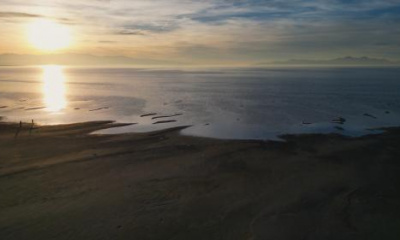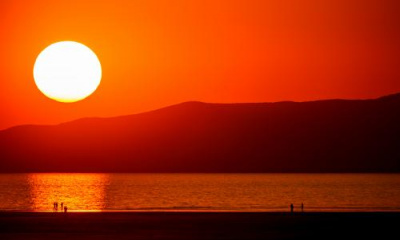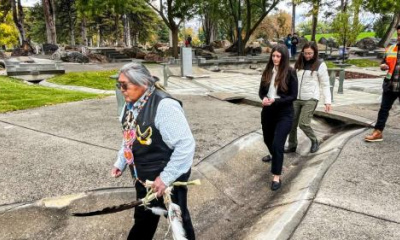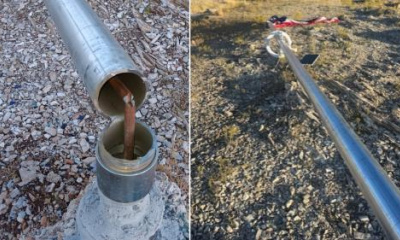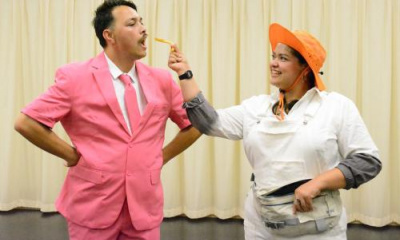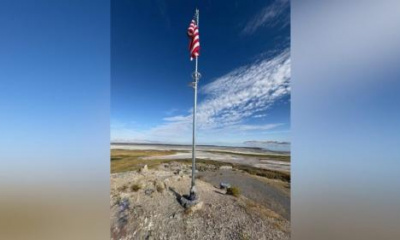ANTELOPE ISLAND — After a downslope wind event in Northern Utah brought hurricane-force gusts to the area, the weather calmed Friday, giving way to a placid vernal afternoon and setting the stage for an event inspired by the majesty of the Great Salt Lake.
The Fielding Garr Ranch at Antelope Island State Park served as the venue for a “gratitude concert,” during which lake-inspired poetry, song and music was performed. The event was organized by Terry Tempest Williams, a conservationist, educator and writer-in-residence at the Harvard Divinity School, or HDS.
Having studied the Great Salt Lake for one year, Williams and a group of 15 HDS students have made a pilgrimage to its shores as a culminating moment. The group has been living on the island and inundating itself in all aspects of the lake — its unique energy, mysteries, ecology, history and more — for a period of eight days.
“It’s been very, very powerful,” Williams told the Standard-Examiner. “And then the last stage is, of course, the gratitude, which we’re having today for all of our mentors that were so generous with us.”
Williams made special note of film producer Gerlayn Dreyfous, who she described as the night’s “guest of honor” and someone who helped make the pilgrimage happen.
Author/musician Gerald Elias was tasked with creating the performance’s musical setting. He enlisted the help of other composers to create the original pieces that accompanied and enriched the words that were shared.
Igor Iachimciuc, Mathew Russell Durrant, Josh Cramer and Olivia Iachimciuc joined Elias in contributing to the musical element. Words and lyrics were recited by Nan Seymour, Josh Kurtz, Eve Woldemikael, Cramer, Akhil Thomas, Raisa Tolchinsky and Williams.
Elias told the Standard-Examiner that he and the other composers received the poems and crafted music for them in a truncated period of time, a matter of just a few weeks.
As with others involved with the event, Elias has a sense of urgency about preserving the lake, which, despite the increased moisture of the last two winters, continues to be in a perilous state.
“When we arrived in 1988, the lake level was just about at its all-time historic high level,” Elias said. “Now, it’s been pretty much at its all-time low. And that’s over a period of only like 30 years, which is really scary. Very, very scary.”
However, Elias has been encouraged by recent conservation efforts.
“Concerts like this and the publicity that it’s been getting the past few years I think is all for the good, because we really need to see changes in water-use laws here, environmental regulations and just the way the lake is managed,” he added.
Lynn de Freitas, executive director of Friends of Great Salt Lake, which helped publicize Friday’s event, agrees.
“For the longest time, the lake was kind of there and we were here,” she told the Standard-Examiner. “But, we’ve gone through, I think, a growth spurt — not just with more population, but attitudinally — where we recognize the lake for the significance that it has hemispherically and as a public trust resource that belongs to the people of Utah that we have to manage, as its stewards, sustainably.”
According to Williams, her students from HDS have been motivated to take up the lake’s cause, too.
“I think our students wondered, ‘What do we, as outsiders, have to give here? We’re here to learn, but what can we give back?’ And I think what we are learning we can give back is our gratitude, is a commitment that this is not just a local issue but a global and international issue.”

